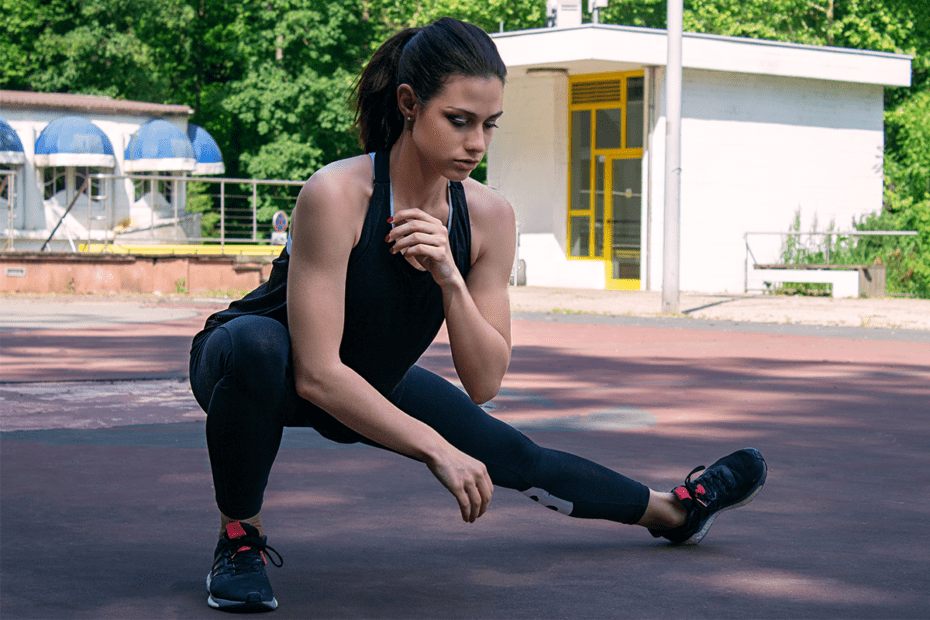Side lunges, also known as lateral lunges, are a fantastic lower body exercise that targets various leg muscles while enhancing your flexibility and balance. This exercise primarily engages the quadriceps, hamstrings, and adductors while also working your glutes and core muscles. In this comprehensive guide, we’ll explore the benefits of side lunges, provide step-by-step instructions on how to perform them correctly, highlight common mistakes to avoid, introduce variations for added challenge, and suggest alternative exercises to diversify your lower body workout routine.
Muscles Worked
- Primary Muscles:
- Quadriceps (front thigh muscles)
- Hamstrings (back thigh muscles)
- Adductors (inner thigh muscles)
- Secondary Muscles:
- Gluteus Maximus (buttocks)
- Calves (gastrocnemius)
- Core muscles (for stability)
How to Do Side Lunges
Follow these steps to execute side lunges correctly:
Equipment Needed: None
- Starting Position:
- Stand up straight with your feet together and your arms relaxed at your sides.
- Engage your core by pulling your belly button toward your spine.
- Step to the Side:
- Take a lateral step to your right with your right foot, ensuring it’s a comfortable stride length.
- As you step to the side, shift your body weight toward your right foot.
- Lunge Down:
- Bend your right knee and lower your body toward the ground while keeping your left leg straight.
- Lower your body until your right thigh is parallel to the ground or slightly below.
- Push Back Up:
- Push off your right foot to return to the starting position.
- Shift your body weight back to your center.
- Repeat:
- Now, step to your left with your left foot and perform a lunge on the other side.
- Alternate between legs for the desired number of repetitions.
- Maintain Form:
- Keep your back straight and your chest up throughout the exercise.
- Ensure your knees stay in line with your ankles and don’t collapse inward.
- Repetitions and Sets:
- Aim for 10-12 repetitions per leg for 2-3 sets.
Benefits of Side Lunges
Incorporating side lunges into your workout routine offers several benefits:
- Leg Strength: Targets and strengthens the major leg muscles, including the quadriceps, hamstrings, and adductors.
- Hip Mobility: Enhances hip flexibility and mobility, which can improve overall athletic performance.
- Functional Fitness: Prepares your legs for lateral movements often used in sports and everyday activities.
- Balance and Coordination: Challenges your balance and coordination as you move laterally.
- Core Engagement: Engages your core muscles to stabilize your body during the exercise.
- Variety: Adds variety to your lower body workout routine, preventing workout plateaus.
Common Mistakes to Avoid
To maximize the effectiveness of side lunges and reduce the risk of injury, be mindful of these common mistakes:
- Overstriding: Taking excessively long steps can strain your knees. Maintain a comfortable stride length.
- Knee Alignment: Ensure that your knees stay in line with your ankles and don’t collapse inward.
- Arching the Back: Keep your back straight and avoid arching or rounding it during the lunges.
- Rushing: Maintain control throughout the exercise rather than rushing through the movement.
- Neglecting Core Engagement: Keep your core muscles engaged to stabilize your body and protect your lower back.
Variations of Side Lunges
To add variety to your leg workout and target different muscle groups, consider these side lunge variations:
- Weighted Side Lunges: Hold dumbbells or a kettlebell in both hands to increase resistance and challenge your upper body.
- Curtsy Lunges: Combine a side lunge with a diagonal step backward to engage the inner and outer thighs.
- Sliding Side Lunges: Perform side lunges while wearing socks on a smooth surface, allowing your feet to slide out to the sides for an added challenge.
Alternative Exercises
If you’re looking to diversify your lower body workout, consider these alternative exercises:
- Traditional Lunges: Perform forward or reverse lunges to target similar muscle groups.
- Squats: A classic lower body exercise that engages the quadriceps, hamstrings, and glutes.
- Step-Ups: Step onto a sturdy platform or bench, alternating legs, to work your quads, hamstrings, and glutes.
- Leg Press: Performed on a leg press machine, it emphasizes leg and glute strength.
Incorporating side lunges and their variations into your leg workout routine can help you develop strong and toned legs while improving your balance and stability. Remember to maintain proper form, start with a comfortable stride length, and gradually increase the difficulty as you become more proficient in the exercise.
